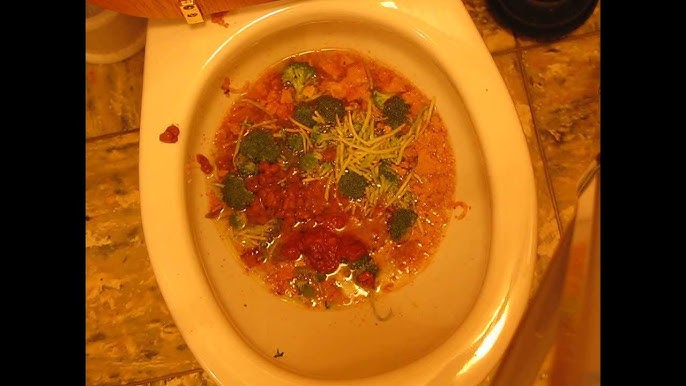Is it Allowed to Flush Food Down the Toilet?
Is it Allowed to Flush Food Down the Toilet?
Blog Article
The publisher is making several good pointers related to Think Twice Before Flushing Food Down Your Toilet as a whole in the article further down.

Intro
Many individuals are frequently faced with the problem of what to do with food waste, particularly when it comes to leftovers or scraps. One typical inquiry that occurs is whether it's okay to flush food down the bathroom. In this write-up, we'll look into the reasons people could consider flushing food, the effects of doing so, and alternate methods for proper disposal.
Reasons why individuals could think about purging food
Absence of awareness
Some individuals might not be aware of the prospective injury caused by purging food down the toilet. They might erroneously think that it's a safe technique.
Ease
Purging food down the commode might seem like a fast and simple solution to dealing with unwanted scraps, particularly when there's no neighboring trash can readily available.
Idleness
Sometimes, people may merely choose to flush food out of large idleness, without thinking about the effects of their activities.
Consequences of flushing food down the toilet
Ecological impact
Food waste that winds up in waterways can add to contamination and harm marine environments. Additionally, the water made use of to purge food can strain water resources.
Plumbing problems
Purging food can lead to blocked pipelines and drains pipes, causing costly plumbing repair work and aggravations.
Kinds of food that should not be flushed
Fibrous foods
Foods with fibrous structures such as celery or corn husks can obtain tangled in pipes and create blockages.
Starchy foods
Starchy foods like pasta and rice can soak up water and swell, resulting in obstructions in pipelines.
Oils and fats
Greasy foods like bacon or cooking oils need to never ever be flushed down the bathroom as they can strengthen and trigger clogs.
Correct disposal techniques for food waste
Making use of a waste disposal unit
For homes geared up with waste disposal unit, food scraps can be ground up and purged with the pipes system. Nevertheless, not all foods appropriate for disposal in this way.
Recycling
Certain food product packaging products can be reused, reducing waste and reducing ecological impact.
Composting
Composting is a green means to throw away food waste. Organic materials can be composted and made use of to improve soil for gardening.
The importance of appropriate waste administration
Minimizing environmental harm
Proper waste administration methods, such as composting and recycling, help reduce pollution and maintain natural deposits for future generations.
Protecting plumbing systems
By preventing the method of flushing food down the bathroom, house owners can protect against costly plumbing repair services and preserve the integrity of their pipes systems.
Conclusion
To conclude, while it may be tempting to flush food down the toilet for ease, it's important to comprehend the possible effects of this action. By embracing appropriate waste management practices and getting rid of food waste responsibly, people can contribute to much healthier plumbing systems and a cleaner setting for all.
FLUSH FOOD DOWN THE TOILET?
FLUSHING FOOD CAN CAUSE BLOCKED DRAINS IN YOUR HOME
All of the plumbing fixtures in your home are connected to the same sewer pipe outside of your home. This outdoor sewer pipe is responsible for transporting all the wastewater from your home to the Council sewer mains. Even small pieces of food that go down the kitchen sink can cause problems for your sewer. It should therefore be obvious that flushing larger bits of food, such as meat, risks a clog in either the toilet itself or the sewer pipes. Flushing greasy food is even more problematic because oil coagulates when it cools, coating the interior lining of your pipes.
THE TOILET IS NOT A BIN
Food isn’t the only thing that people shouldn’t be flushing down the toilet. People use the toilet to dispose of all kinds of things such as tampons, makeup wipes, dental floss, kitty litter and even underwear. Water goes to great lengths to educate residents about the high costs and stress placed on wastewater treatment systems simply from people flushing the wrong stuff down the toilet. It costs taxpayers millions of dollars each year, and homeowners thousands in blocked drain repairs.
FLUSHING FOOD IS A WASTE OF WATER
Flushing food is a waste of our most precious resource - water. In June this year Level 1 water restrictions were introduced to protect water supply from drought conditions. Much of New South Wales continues to be affected by prolonged drought with recent figures revealing up to 97 per cent of the state remains in drought. Depending on whether you have a single or dual flush toilet, every single flush uses between five and 11 litres of water. In the current climate this is a huge amount of water to be wasting on flushing food that should be placed in the bin (or better yet, the compost).
https://www.jabplumbingsolutions.com.au/blog/can-you-flush-food-down-the-toilet

We were shown that report about Think Twice Before Flushing Food Down Your Toilet through an associate on our other domain. If you enjoyed reading our article kindly don't forget to share it. I love reading our article about Think Twice Before Flushing Food Down Your Toilet.
Details Report this page